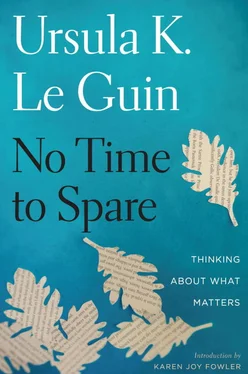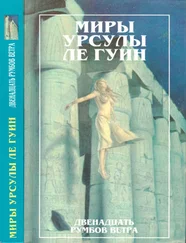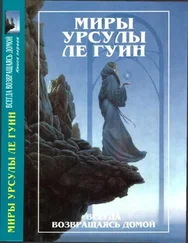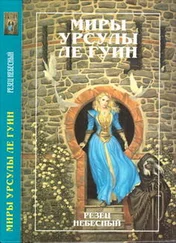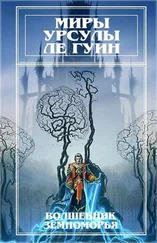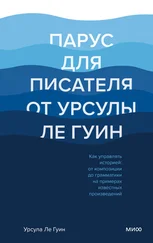Very early in my life, like most kids, I could distinguish “Pretend” from “Real,” which means I knew myth and fact were different things and had some sense of the no-man’s land that lies between the two. At any age I can recall, if somebody had asked me, “Is Santa Claus real?” I would, I think, have been confused and embarrassed, blushed red in case it was the wrong answer, and said no.
I don’t think I missed anything not thinking Santa Claus was real the way my parents were real. I could listen out for reindeer hooves with the best of them.
Our kids had Santa Claus; we read the poem, and left milk and cookies out for him; and so do their kids. To me, that’s what’s important. That the bonding ritual be honored, the myth reenacted and carried forward in time.
When I was a kid and other kids started telling about “when they found out about Santa Claus,” I kept my mouth shut. Incredulity is unlovable. I am opening my mouth now because I am too old to be lovable, but still incredulous when I hear people—adults!—mourning over the awful day they found out that Santa Claus wasn’t real.
To me what’s awful is not—as it is usually presented—the “loss of belief.” What’s awful is the demand that children believe or pretend to believe a falsehood, and the guilty-emotion-laden short-circuiting of the mind that happens when fact is deliberately confused with myth, actuality with ritual symbol.
Is what people grieve over the pain not of losing a belief but of realizing that somebody you trusted expected you to believe something they didn’t believe? Or is it that in losing literal belief in our fat little Father Christmas, they also lose love and respect for him and what he stands for? But why?
I could go on from here in several directions, one of them political. As some parents manipulate their children’s beliefs, however well-meaningly, some politicians play more or less knowingly on people’s trust, persuading them to accept a deliberately fostered confusion of actuality with wishful thinking and fact with symbol. Like, say, the Third Reich. Or Let a Thousand Flowers Bloom. Or Mission Accomplished.
But I don’t want to go there. I just want to meditate on the horsies upstairs.
Belief has no value in itself that I can see. Its value increases as it is useful, diminishes as it is replaced by knowledge, and goes negative when it’s noxious. In ordinary life, the need for it diminishes as the quantity and quality of knowledge increase.
There are areas in which we have no knowledge, where we need belief, because it’s all we can act on. In the whole area we call religion or the realm of the spirit, we can act only on belief. There, belief may be called knowledge by the believer: “I know that my Redeemer liveth.” That’s fair, so long as it’s fair also to maintain and insist upon the difference, outside religion, between the two things. In the realm of science, the value of belief is nil or negative; only knowledge is valuable. Therefore, I don’t say I believe two plus two is four, or that the earth goes around the sun, but that I know it. Because evolution is an ever-developing theory, I prefer to say I accept it, rather than that I know it to be true. Acceptance in this sense is, I suppose, the secular equivalent of belief. It can certainly provide endless nourishment and delight for mind and soul.
I’m willing to believe people who say they couldn’t live if they lost their religious belief. I hope they’ll believe me when I say that if my intellect goes, if I’m left groping in confusion unable to tell the real from the imagined, if I lose what I know and the capacity to learn, I hope I die.
To see a person who’s lived only two years in this world seeking and finding her way in it, perfectly trusting, having her trust rewarded with truth, and accepting it—that was a lovely thing to see. What it made me think about above all is how incredibly much we learn between our birthday and last day—from where the horsies live to the origin of the stars. How rich we are in knowledge, and in all that lies around us yet to learn. Billionaires, all of us.
May 2011
I HAVE SEEN many rattlesnakes, I have eaten fried rattlesnake; but only once have I ever been in contact with a living rattler. Though contact is not the word I really want—it is metaphorical and inexact. We did not touch. Maybe it was communication, though of a very limited kind. As communication between alien species is perhaps doomed to be.
I have told the story often as a comedy, a story in which people behave ridiculously, with a happy ending. Here it is:
We were at the old ranch in the Napa Valley and I was just about to sit down on one of the 1932 iron chaise lounges (carefully, because if you sit too far toward the end, the whole unwieldy thing stands up and throws you off like a bronco) when I heard a noise I recognized. That was the first communication. It was the hissing buzz of the rattlesnake’s rattles. Startled by my movements, it was heading off into the high grass, rattling away. About fifteen feet away it looked back, saw me looking at it, and stopped there, its head up and facing me and its gaze fixed on me. As mine was fixed on it.
I hollered for Charles. The rattler paid no attention. I believe they are deaf. I suppose they “hear” their own rattle as vibration in their body, not in the air.
Charles came out and we discussed the situation—not calmly. I said, “If he goes off into the high grass there, we’ll never dare walk out in the pasture the whole time we’re here.”
We thought we had to kill the rattlesnake. That’s what you do, generally, in the country, at a place where little kids come and run around.
Charles went and got the big heavy long-handled hoe my father called the Portugee hoe, with which rattlers had been killed before, by others. Not by us. Charles got close enough to strike.
The rattler and I had never taken our eyes off each other, or moved.
Charles said, “I can’t.”
I said, “I couldn’t either.”
“So what do we do?” we said.
The rattler was probably thinking the same thing.
“Go see if Denys is there?” Charles said.
I said, “I don’t think it’ll move so long as we keep staring at each other, so you go.”
And Charles went up the driveway and down the road a couple hundred yards to our only near neighbors, the Cazets. It took a while. All that while, the snake and I did not move and looked steadily into each other’s eyes. They say a snake’s gaze is hypnotic, but who was hypnotizing whom?
We were like people newly in love who “can’t take their eyes off each other.” This was not love, but it was something equally intense, and even more immediately a matter of life and death.
It is this brief time, five or six minutes I suppose, ten minutes at most, that over the years I have thought of again and again, always with the vividness of the moment and always with a sense of its importance, or import: of there being a great deal to learn from it.
During this time, the rattlesnake and I were alone together. Alone in all the world. We were held together by common fear—bonded. We were held in a spell—entranced.
This time was outside ordinary time, and outside ordinary feelings; it involved danger for both of us; and it involved a bond between creatures who do not and cannot ordinarily relate to each other in any way. Each would naturally try not to relate—to just get away—or to kill in self-defense.
In all these respects, I think it isn’t amiss to think of this time as sacred.
The sacred and the comic are not that far apart, something the Pueblo Indians seem to know better than most of us do.
Charles and Denys came panting down the driveway with the big galvanized garbage can and a piece of semirigid white plastic tubing about fifteen feet long. Denys had the tube; he knew what to do because he’d done it before. A distinguished artist/author of children’s books, he was a year-rounder in the valley. And his house was on a pretty little property which, before the house was built, we used to call Rattlesnake Clearing.
Читать дальше
